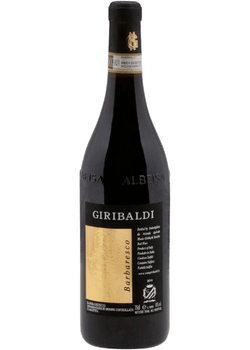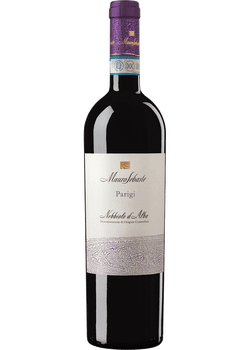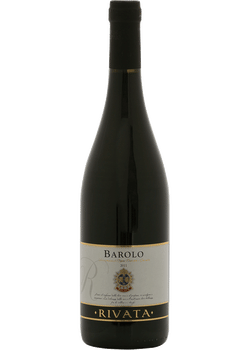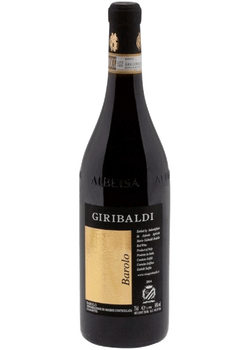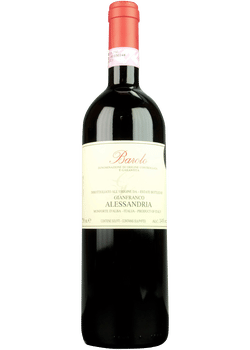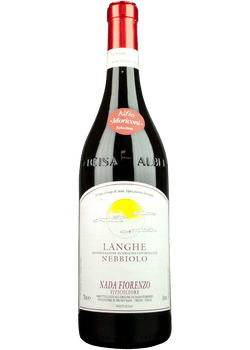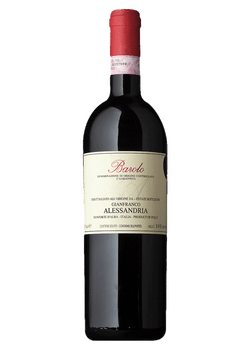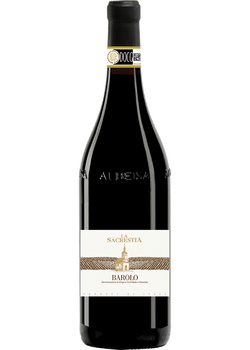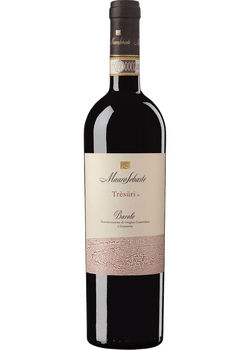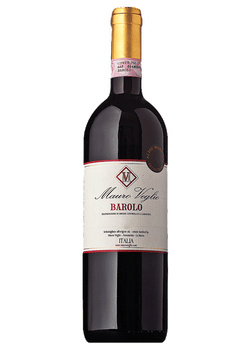The great Nebbiolo grape (pronounced neb-ee-OH-low) is the star of Italy’s Piedmont region, where the foothills of the Alps provide rocky slopes that suit this temperamental variety. Nebbiolo wines are produced throughout the region, most famously in Barolo and Barbaresco.
These classic red wines are prized by collectors. With medium to high alcohol levels, high tannins, and high acidity, the powerful Barolo and elegant Barbaresco wines can age for decades, developing a range of interesting and unique flavors such as rose, red fruits, licorice, leather, and tar.
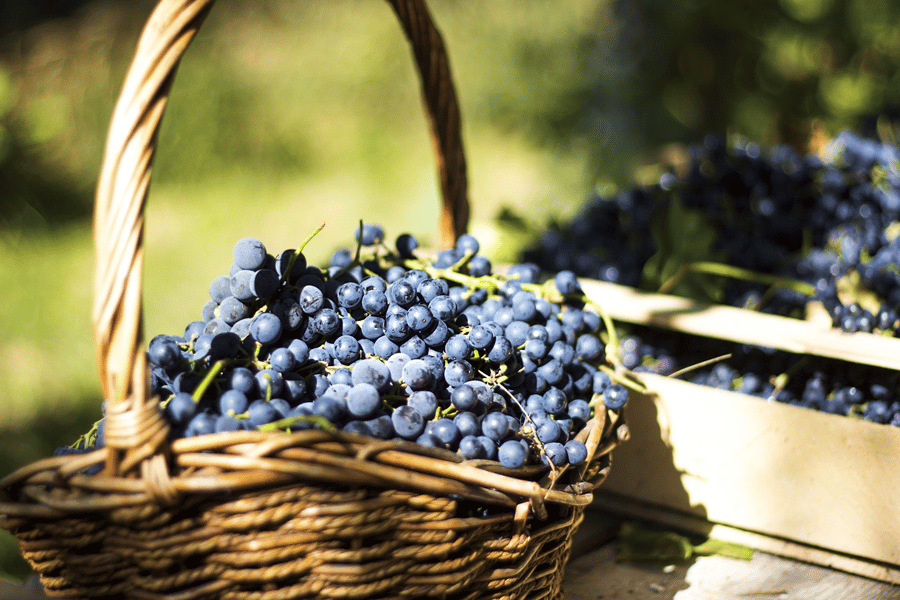
3 facts you should know
-
Wines produced from the Nebbiolo grape date back to the 13th century.
-
The name Nebbiolo comes from the Italian word nebbia meaning fog, representing the late fall fog that rolls into the vineyards from the mountains to the north.
-
Nebbiolo wines get better with age and are best left in the cellar for a minimum of 10 years.
Color

Taste profile
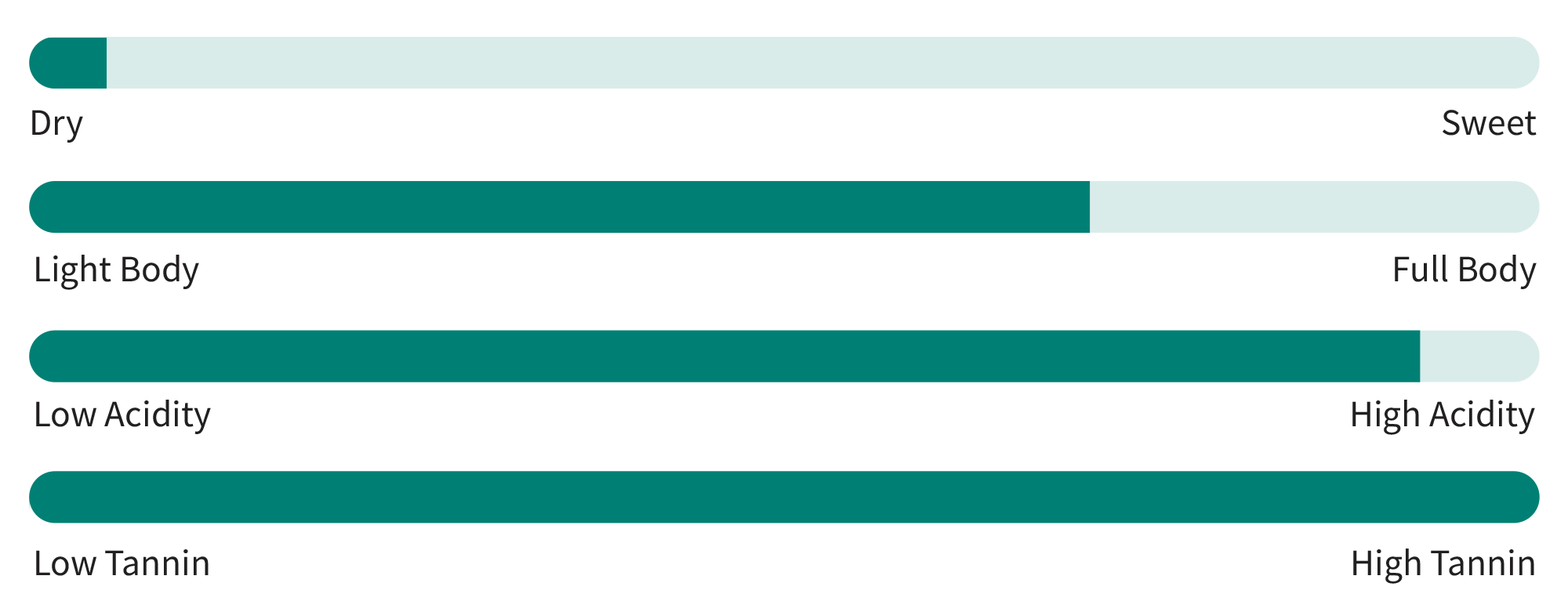
Nebbiolo wines are known for their vibrant aromas, structure, and tannin. While they are usually lighter in color with red fruit, floral, and earthy aromas, the wines have very high tannin and lots of acidity. They are almost always very dry and have a fuller body. On the nose and color alone, you might confuse this wine for a red Burgundy.
The complexity of aromas and high levels of both tannin and acidity make Nebbiolo a great candidate for aging. Many wines benefit from 10 or more years of resting in the bottle before they are opened. This time allows the gripping tannins to mellow and soften. If you drink a Nebbiolo too young, the wine can feel like sandpaper in your mouth. Newer winemaking techniques do allow for Nebbiolo wines to be enjoyed younger than before, but they still will benefit from a few years in the bottle.
Primary flavors
![]()
Nebbiolo is one of the most fragrant red varietals. You’ll find floral aromas of rose and violet, along with red fruits including cherry, plum, and cranberry, and sometimes licorice or dried herbs. With age, Nebbiolo wines can develop aromas of leather, tobacco, earth, mushroom, and tar.
Key winemaking regions
Italy
Italy is almost the only place you will find Nebbiolo. The grapes are tough to grow and favor the climate and soils of Piedmont in northwest Italy. Wines are also made in the neighboring region of Lombardy.
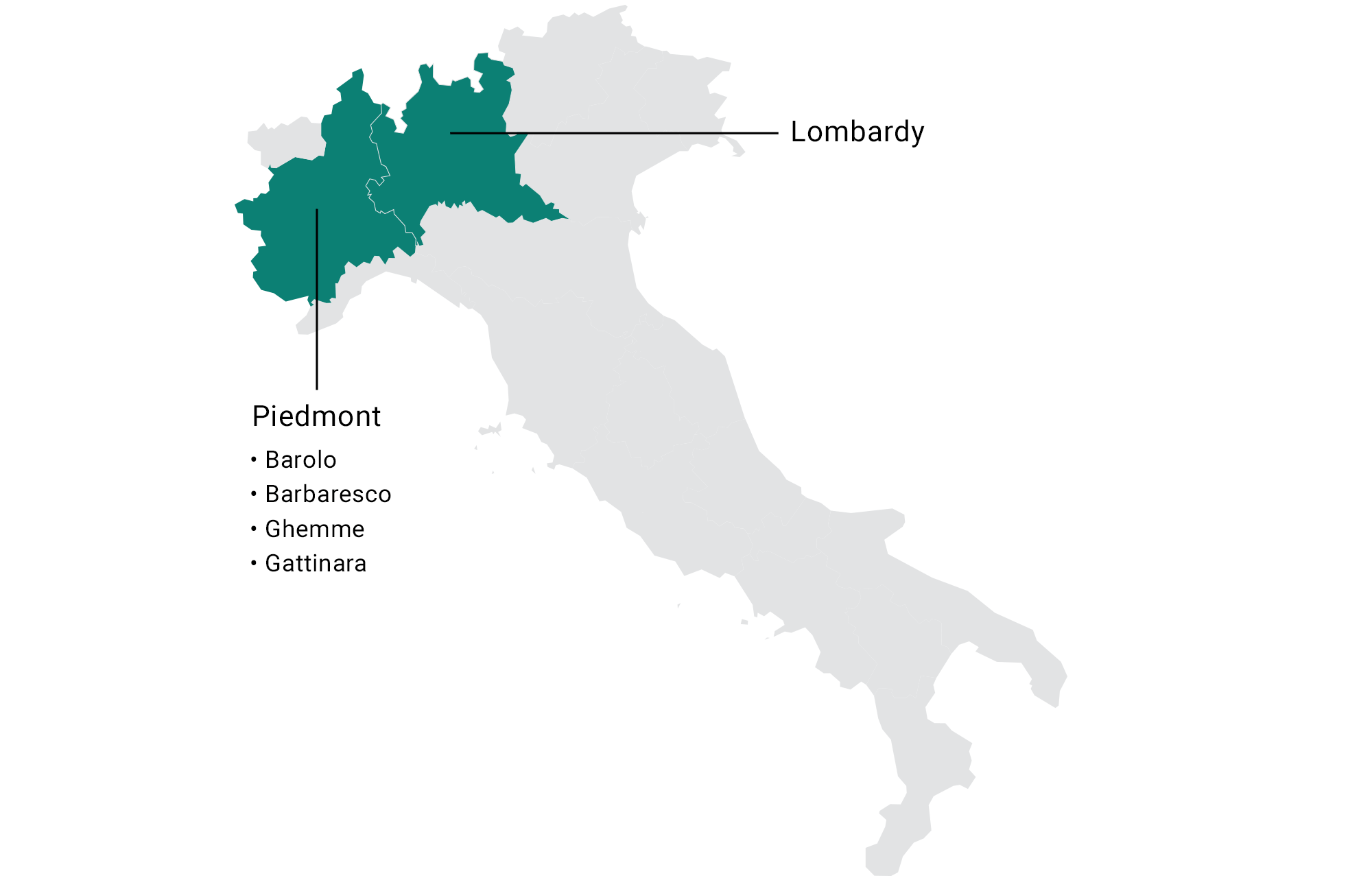
Piedmont
Barolo & Barbaresco
Barolo and Barbaresco are the two most notable appellations for Nebbiolo wine. Located in the northwest of Italy in the Piedmont region, the cool climate requires grapes that are grown at higher altitudes to be on south and south-east facing slopes. The direct sunlight and position above foggy valleys allow the late ripening grapes to mature late into the fall.
Both Barolo and Barbaresco wines must be made from 100 percent Nebbiolo grapes. Both appellations also have additional aging requirements. Barbaresco, the smaller of the two, requires wines to be aged two years before they are sold, with at least nine months in oak barrels. Barolo requires a slightly longer aging period of at least three years of aging, with 18 months in oak. You can also find a “Riserva” classification that has additional regulations, such as longer aging requirements.
Barolo wines usually have very high tannins that need to soften before drinking — you’ll want to keep these bottles around for a few years before opening. Barbaresco wines tend to have slightly little softer tannins from the start, but still benefit from aging. Wines from both regions come with high price tags.
An alternate, yet equally great expression of the grape is Nebbiolo d’Alba. Located just south of Barolo, wines from here are a little astringent (and less expensive), meaning they can be enjoyed at a younger age.
Ghemme & Gattinara
To the north of Barolo and Barbaresco you’ll find Ghemme and Gattinara where vines are grown on either side of the Sesia River. A clone of the Nebbiolo grape, called Spanna, is grown here. The cooler climate produces lighter, more elegant wines with softer tannins. Red fruit flavors and earthy notes are similar to cold climate Pinot Noir. They also have floral and sometimes have herbaceous aromas.
Lombardy
Lombardy is one of the only Italian regions outside of Piedmont that produces wines from Nebbiolo. The vines grow on south-facing slopes in the Valtellina valley opening to Lake Como. This region is cooler and produces elegant Nebbiolo wines with floral and herbal notes and softer tannins. The clone of Nebbiolo grown here is called Chiavennasca.
Other winemaking regions
Although winemakers in the United States and Australia have tried their hands at producing Nebbiolo wines, none has been able to reproduce the legendary wines Nebbiolo makes in northwest Italy. Other countries that produce small amounts of Nebbiolo wine include Mexico, Australia, and Argentina.
Recommended food pairings
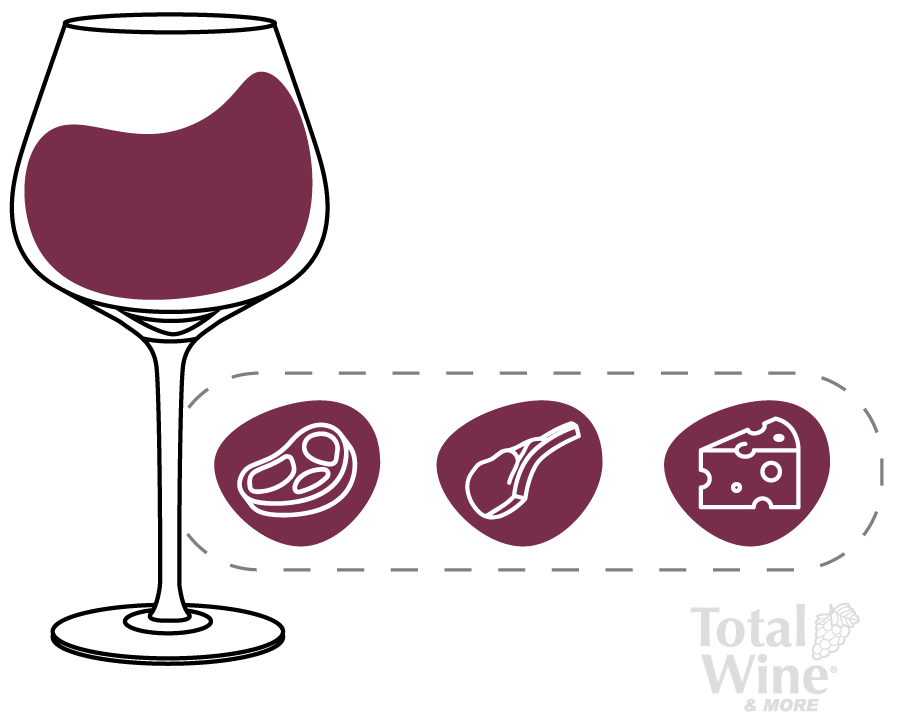
Nebbiolo wine craves rich, fatty dishes. These wines are not meant for casually sipping or pairing with light salads. You’ll want to pair them with creamy, cheesy dishes like truffle risotto or butternut squash ravioli. Nebbiolo is also perfect for carnivorous plates, including ribeye steaks, roasted pig, lamb chops, and Bolognese. The weight of these foods complements the high acidity and tempers the tannins in the wine. Earthy aromas from aging are also complemented by herbs, mushrooms, and other similar flavors.
Want to learn more about Italian wines? Check out our guide to Italy’s wine regions. Or grab a bottle of Nebbiolo wine to enjoy today.

